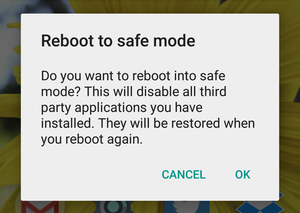The Board results are coming out and now the most critical and crucial time for students are looking for admissions in colleges. This time is important as plenty of organization supports students through various scholarships, some of them are merit based (Board performance based) and some of them are means based (parental income and board marks both).
Here is a list of 10 scholarships with details, Which every student should take a look and must apply as per their eligibility to get benefits.
- Loreal India for Young Women in Science Scholarships
Purpose- Scholarship is only for Girl students desirous of pursuing degree course in science/medical/ engineering/ biotechnology or any other scientific field
Award-Cash Rs 2.5 lakh to each girl
Eligibility- Mumbai, Bangalore, Delhi NCR, Hyderabad Girl Student
Apply-Post, Online
Activity-May, June
(Subscribe now and get 40% discount (coupon code: U78TYIP9) on class 12 passed scholarship SMS/Email alerts click here)
- G.P. Birla Educational Scholarships
Award: Rs 50000 per year
Eligibility-Class 12 Passed, 80% + Marks in State Board, or 85% in Central board, or have secured rank in top 150000 in AIEEE/JEE/AIPMT
Course: Science, Humanities, Engineering, Medicine, Architecture, Commerce or Law
Apply-by Post
Activity-June, July
(Subscribe now and get 40% discount (coupon code: U78TYIP9) on class 12 passed scholarship SMS/Email alerts click here)
- Sahu Jain Trust- Loan Scholarship
Purpose- Non Refundable Scholarship for pursuing Graduation and Post Graduation in all subjects.
Award- Financial Support, Certificates
Eligibility- Graduation / Post Graduation in Engg, Medical, MBA
Apply- By Post
Activity- March to July
(Subscribe now and get 40% discount (coupon code: U78TYIP9) on class 12 passed scholarship SMS/Email alerts click here)
- Merit cum Means Scholarship for Minority Students
Purpose- To provide financial assistance to the poor and meritorious students belonging to minority communities to enable them to pursue professional and technical courses
Award- Rs 25,000 to Rs 30,000 per year
Eligibility- Class 12 Passed, Graduates of Muslim, Christian, Parsis, Bauddhist, Sikhs, Jain community
Apply- Online
Activity- June to September
(Subscribe now and get 40% discount (coupon code: U78TYIP9) on class 12 passed scholarship SMS/Email alerts click here)
- FAEA Scholarship
Purpose- To secure social justice for students belonging to socially and economically disadvantaged sections of the society. It enables economically and socially disadvantaged students to study in the institutions, which provide academic excellence, access to structures of power and economic opportunity.
Award- Higher education scholarship
Eligibility-Class 12 passed, 1st year Graduation
Apply-Online, Post
Activity- May, June
(Subscribe now and get 40% discount (coupon code: U78TYIP9) on class 12 passed scholarship SMS/Email alerts click here)
- R D Sethna Loan Scholarship 2014
Purpose- To empower individuals for pursuing their academic interests and career. The loan scholarships are granted to cover fees, both books and tuitions.
Award- Financial, Certificates
Eligibility- Class 12 Passed
Apply- By Post, in Person
Activity-April to August
(Subscribe now and get 40% discount (coupon code: U78TYIP9) on class 12 passed scholarship SMS/Email alerts click here)
- Post-matric Scholarship for Minority Students
Purpose- To support Minority community students for studies in a government or private higher secondary school/ college/ university. And, technical and vocational courses in Industrial Training Institutes/ Industrial Training Centres affiliated with the National Council for Vocational Training (NCVT) of classes 11 and 12 level.
Award-Education Scholarship of Rs. 9,300 to Rs 13,800 per year
Eligibility-Class 11, 12, 12+ of Muslims, Sikhs, Christians, Buddhists and Zoroastrians (Parsis), Family income less than Rs. 2 lakh
Apply-Online, Post
Activity- August, September
(Subscribe now and get 40% discount (coupon code: U78TYIP9) on class 12 passed scholarship SMS/Email alerts click here)
- Maulana Azad National Scholarship for Minority Community Girls
Purpose- Scholarship is awarded to study any subject offered by School/College for Muslims, Christians, Buddhists, Sikhs, Parsis Girls in class 11 & 12
Award-Cash Scholarship of Rs 12,000
Eligibility-Class 11 Girls
Apply- Online
(Subscribe now and get 40% discount (coupon code: U78TYIP9) on class 12 passed scholarship SMS/Email alerts click here)
- Gaurav Foundation Scholarship
Award-Rs. 20000-2 Lakhs
Eligibility-11yrs-35yrs, All students
Apply-By Email
Deadline-September to November
B4S: www.b4s.in/UID/GFMS
(Subscribe now and get 40% discount (coupon code: U78TYIP9) on class 12 passed scholarship SMS/Email alerts click here)
- The tGELF Khemka Domestic Scholarships/Grants 2014
Eligibility-Class 12 passed
Apply- Online
Course-All undergraduate courses
Activity-June, July
(Subscribe now and get 40% discount (coupon code: U78TYIP9) on class 12 passed scholarship SMS/Email alerts click here)
- North South Foundation (NSF) Scholarship 2014-15
Award- Rs 5000 to 12000 per year
Eligibility-Class 12 passed students in top 10% in Board & Exams, Family income is less than equal to Rs 65000
Apply-Online, By Post
Course: Professional courses like Engineering, Medicine, and Polytechnic in a GOVERNMENT COLLEGE
Deadline-September
(Subscribe now and get 40% discount (coupon code: U78TYIP9) on class 12 passed scholarship SMS/Email alerts click here)
- Nirmaan Scholarship and Mentorship Program (NSMP)
Award- College Fee till course completion
Eligibility-Class 12 Passed, Merit cum MeansApply-Online, By Post
Course: Professional courses like Engineering, Medicine, and Polytechnic in a GOVERNMENT COLLEGE
Deadline-June, July
(Subscribe now and get 40% discount (coupon code: U78TYIP9) on class 12 passed scholarship SMS/Email alerts click here)
In addition to above, There are many prestigious scholarships are in line.
-
Central Sector Scheme Scholarship for Class 12 passed students of Science, Commerce & Arts subjects
Total 84000 Scholarships (50% for Girls and boys each)
Award- Graduation course: Rs 10,000 per year for 3 years, Masters course: Rs 20,000 per year for next 2 years
Apply-Online, Post
Activity: August, September
(Subscribe now and get 40% discount (coupon code: U78TYIP9) on class 12 passed scholarship SMS/Email alerts click here)
-
INSPIRE Scholarship for Class 12 Board performers (Top1 percentile), Performance in JEE Mains, Advance, NEET, KVPY, NTSE, IMO etc Competitive Examinations.
Total 10000 Scholarships
Award- Annual scholarship of total value Rs.80,000 till the course completion
Apply-Online, Post
Activity: September, October
(Subscribe now and get 40% discount (coupon code: U78TYIP9) on class 12 passed scholarship SMS/Email alerts click here)
-
Indian Oil Academic Scholarship for Class 10, 12 passed students
Total-2600 Scholarships
Award-1000 Rs per month
Course-10+/ITI, Engineering & MBBS, MBA
Apply-Online
Activity: August, September
(Subscribe now and get 40% discount (coupon code: U78TYIP9) on class 12 passed scholarship SMS/Email alerts click here)
-
CBSE Single Girl Child Scholarship for Class 10 passed ONLY SINGLE GIRL CHILD of their parents.
Award- 500Rs per month for 2 years
Course-Class 11 & 12 study
Apply-Online
Activity: August, September



 To provide the much needed financial support to deserving students for pursuing higher professional or technical education in India and abroad. The education loan would be provided to those students who have obtained admission to career-oriented courses e.g. medicine, engineering, management etc., either at the graduate or post-graduate level.
To provide the much needed financial support to deserving students for pursuing higher professional or technical education in India and abroad. The education loan would be provided to those students who have obtained admission to career-oriented courses e.g. medicine, engineering, management etc., either at the graduate or post-graduate level. Under section 80(e) of the
Under section 80(e) of the  The high incidence of failure in examinations, such as that in engineering courses, also creates a large number of overdue loans. But there are borrowers who simply do not pay, in spite of getting lucrative jobs. The percentage of default is found to be higher in loans without security and guarantor. Banks often face problems in tracking the beneficiaries after the course.
The high incidence of failure in examinations, such as that in engineering courses, also creates a large number of overdue loans. But there are borrowers who simply do not pay, in spite of getting lucrative jobs. The percentage of default is found to be higher in loans without security and guarantor. Banks often face problems in tracking the beneficiaries after the course.














